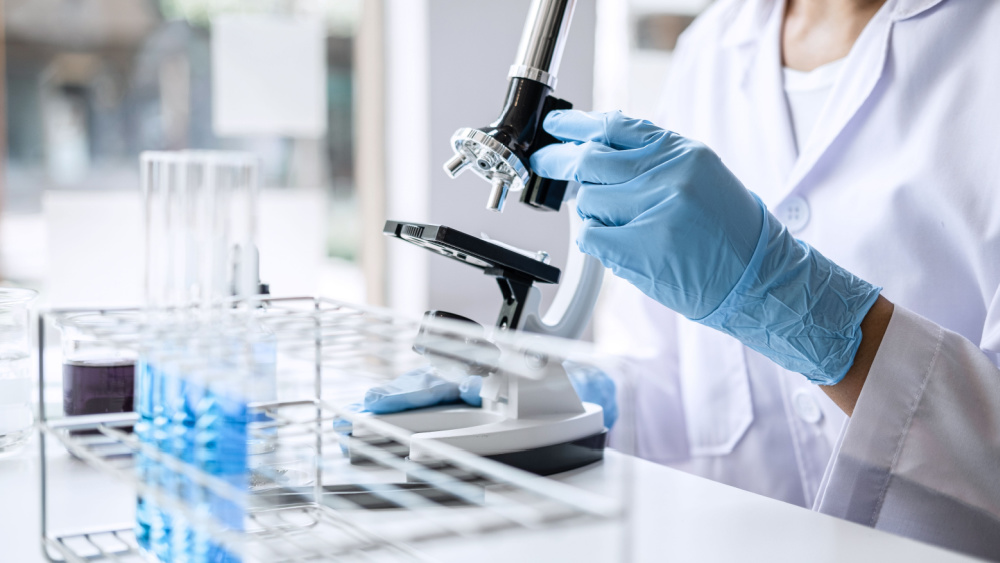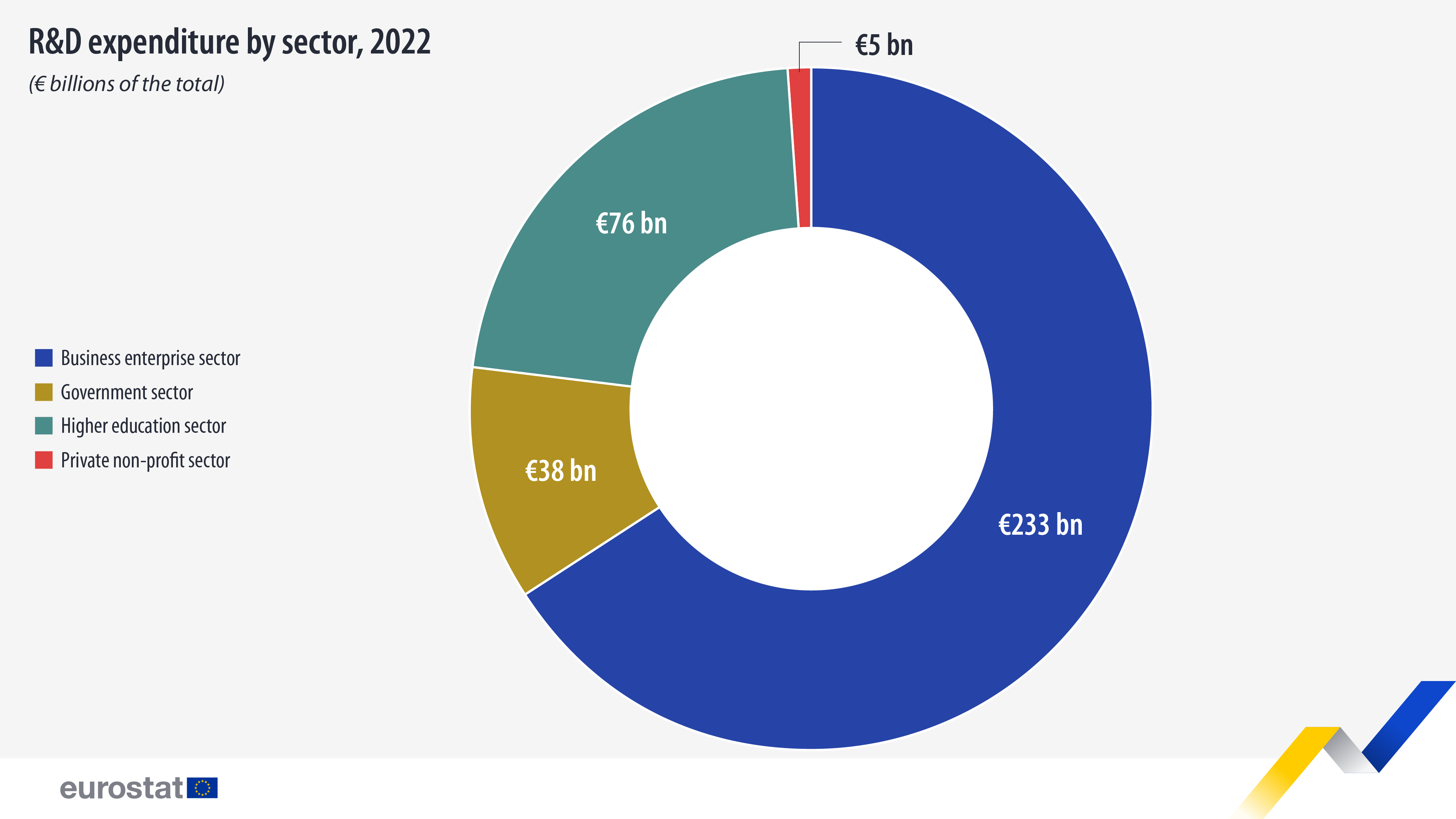In 2022, the EU spent €352 billion on research & development (R&D), 6.34% more than in the previous year (€331 billion) and 48.52% more than in 2012 (€237 billion).
When looking at R&D intensity, i.e. R&D expenditure as a percentage of GDP, data show a slight decrease from 2.27% in 2021 to 2.22% in 2022.
Among the EU members, 4 countries recorded the R&D intensity above 3% in 2022. The highest R&D intensity was recorded in Belgium (3.44%), followed by Sweden (3.40%), Austria (3.20%) and Germany (3.13%).
Source dataset: rd_e_gerdtot
In contrast, 8 EU countries reported R&D intensity below 1%: Romania (0.46%), Malta (0.65%), Latvia (0.75%), Cyprus and Bulgaria (both 0.77%) recorded the lowest shares, followed by Ireland, Slovakia and Luxembourg with shares close to 1%.
Between 2012 and 2022, R&D intensity in the EU increased by 0.14 percentage points (pp). The biggest increases were recorded in Belgium (1.16 pp), Greece (0.77 pp) and Croatia (0.69 pp).
In contrast, R&D intensity decreased in 8 countries. Ireland experienced a decline of -0.6 pp, followed by Finland (-0.45 pp), Estonia (-0.35 pp), Slovenia (-0.30 pp), Luxembourg (-0.23 pp), Denmark (-0.22 pp), Malta (-0.15 pp), and France (-0.13 pp).
Business sector: 66% of the R&D spendings
The business enterprise sector continued to account for the largest share of R&D expenditure. In 2022 it represented 66% of EU R&D spending, totalling €233 billion. It was followed by the higher education sector (22%; €76 billion), the government sector (11%, €37 billion), and the private non-profit sector (1%; €5 billion).
Source dataset: rd_e_gerdtot
This information comes from provisional data on R&D expenditure published by Eurostat. The article presents a handful of findings from the more detailed Statistics Explained article.


